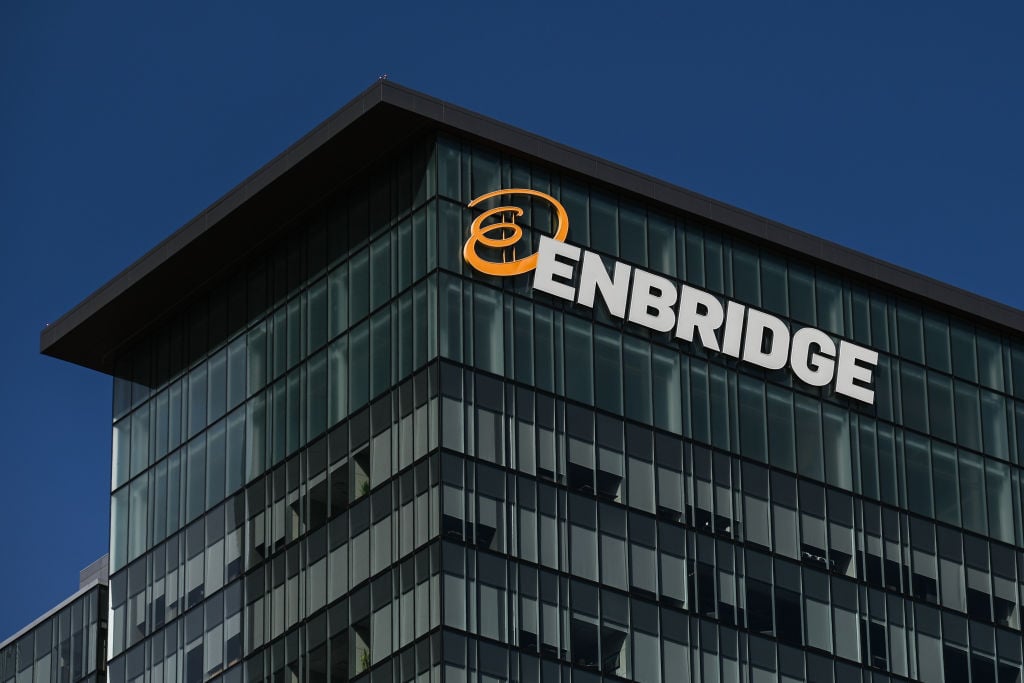Enbridge (ENB +1.37%) received a double dose of good news this week. Regulators in Minnesota not only approved its Line 3 Replacement Project through the state but said the company could take its preferred route. That means it can finish this crucial project without needing to go along a costlier alternative track, which gives it a clear path to complete it on time and on budget. As a result, the approval increases the likelihood that the Canadian pipeline giant will achieve its ambitious dividend growth forecast.
Digging into the approval
The Minnesota Public Utilities Commission voted 5-0 to approve the replacement of Enbridge's aging Line 3 Pipeline that runs through the state. Replacing those pipes will not only mitigate the risk of a future leak but will boost the line's capacity back up to its original design of 760,000 barrels per day (BPD), up from the current level of 390,000 BPD. That will improve the flow of oil from Canada, which doesn't have enough pipeline capacity to move crude from the oil sands regions to refineries.

Image source: Getty Images.
The Commission also voted 3-2 to approve the project along Enbridge's preferred route, which deviates from the existing path to avoid construction through more densely populated and environmentally sensitive areas. However, it did so on the condition that the company modify it slightly to avoid Big Sandy Lake and agree to remove older sections of pipe at landowners' request.
What this means for Enbridge
Heading into the hearing, analysts at BMO Capital saw four potential outcomes:
- A complete rejection of the project
- A complete approval
- An approval along an alternative route
- An approval along the company's preferred route, but with the requirement that it dig up all the old pipe
In the end, regulators chose to approve the project along the company's preferred route with the stipulation that it dig up and replace oil pipes at the request of landowners. That's an ideal outcome for the company. While unlikely, an outright rejection of the project would have been a significant blow to the company since it had already started work on replacing sections in Canada and Wisconsin, investing 3.6 billion Canadian dollars ($2.7 billion) to date. Meanwhile, the approval along an alternative route would have added an estimated $1.2 billion to the project's costs (a 16% increase to the budget), according to analysts.
However, because regulators approved the pipeline along Enbridge's preferred route without requiring the full removal of the existing pipes, it won't change the company's cost estimate of CA$5.3 billion ($4 billion) to replace the pipes north of the border and $2.9 billion for the sections in Minnesota and Wisconsin. As a result, it expects to finish the project within its initial timeline, which means it will enter service by the second half of next year.
By keeping the time frame and budget intact, Enbridge remains on pace to invest CA$22 billion ($16.6 billion) on capital projects through 2020. Since this project represents a significant portion of that backlog, Enbridge has the confidence to affirm its financial outlook that cash flow per share will grow at a 10% compound annual rate through 2020, which positions the company to increase its dividend at that same pace.
Enhancing the appeal
With the uncertainty surrounding the Line 3 Replacement Project now in the rearview mirror, the clarity of Enbridge's growth prospects is dramatically improved. That makes the company an even more ideal option for income-seeking investors since it increases the likelihood that it will not only be able to maintain its 6.3%-yielding dividend but grow it at a double-digit pace over at least the next few years. That income with upside makes it one of the top stocks in the oil patch.






